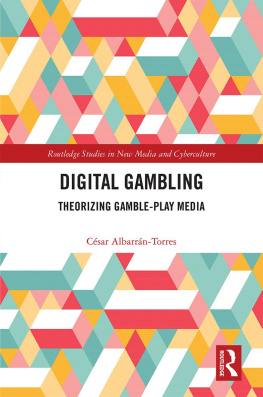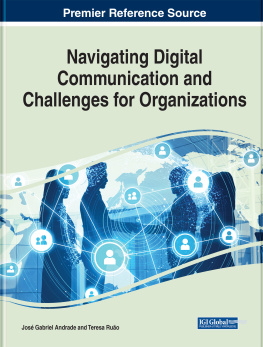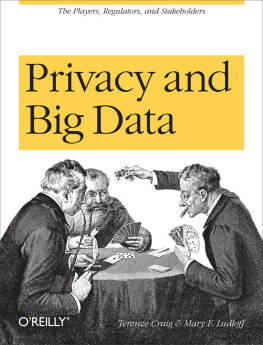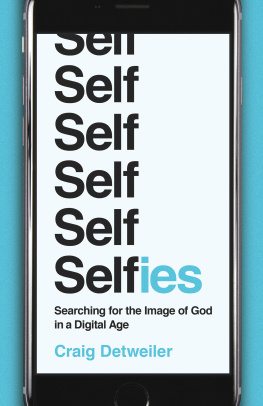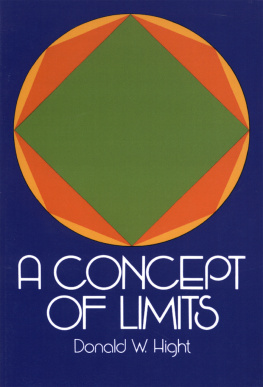
Studying Digital Media Audiences
Although many digital platforms continue to appropriate and reconfigure familiar forms of media experience, this is an environment which no longer consistently constructs an identifiable mass audience in the terms understood by twentieth century audience researchers. The notion of audiencing takes on different characteristics within a digital environment where platforms encourage users to upload, share and respond to content, while the platforms themselves monetize the digital traces of this activity. This environment demands new ways of thinking about audience and user engagement with media technologies, and raises significant questions on methods of conceiving and researching audience-users. This volume addresses ongoing debates in the field of audience research by exploring relevant conceptual and methodological issues concerning the systematic study of digital audiences. Drawing from work conducted by researchers based in Australia and New Zealand, the book uses theoretical frameworks and case study material which are of direct relevance to audience researchers globally.
Craig Hight is an Associate Professor in Communication at the University of Newcastle, Australia. His research interests have focused on audience research, digital media and documentary theory. He is currently researching the relationships between digital media technologies and documentary practice, especially the variety of factors shaping online documentary cultures.
Ramaswami Harindranath is Professor of Media at the University of New South Wales, Australia. He has published widely on audience research; global media, economy and culture; diasporic media and cultural politics; multicultural arts and cultural citizenship; South Asian politics and culture; and postcoloniality. He is currently completing a manuscript entitled Southern Discomfort, which re-assesses the concept and politics of cultural imperialism.
Routledge Studies in New Media and Cyberculture
For a full list of titles in this series, please visit www.routledge.com.
27 Global Media, Biopolitics, and Affect
Politicizing Bodily Vulnerability
Britta Timm Knudsen and Carsten Stage
28 Digital Audiobooks
New Media, Users, and Experiences
Iben Have and Birgitte Stougaard Pedersen
29 Locating Emerging Media
Edited by Germaine R. Halegoua and Ben Aslinger
30 Girls Feminist Blogging in a Postfeminist Age
Jessalynn Keller
31 Indigenous People and Mobile Technologies
Edited by Laurel Evelyn Dyson, Stephen Grant, and Max Hendriks
32 Citizen Participation and Political Communication in a Digital World
Edited by Alex Frame and Gilles Brachotte
33 Feminism, Labour and Digital Media
The Digital Housewife
Kylie Jarrett
34 The Politics of Ephemeral Digital Media
Permanence and Obsolescence in Paratexts
Edited by Sara Pesce and Paolo Noto
35 Studying Digital Media Audiences
Perspectives from Australasia
Edited by Craig Hight and Ramaswami Harindranath
First published 2017
by Routledge
711 Third Avenue, New York, NY 10017
and by Routledge
2 Park Square, Milton Park, Abingdon, Oxon OX14 4RN
Routledge is an imprint of the Taylor & Francis Group, an informa business
2017 Taylor & Francis
The right of the editors to be identified as the authors of the editorial material, and of the authors for their individual chapters, has been asserted in accordance with sections 77 and 78 of the Copyright, Designs and Patents Act 1988.
All rights reserved. No part of this book may be reprinted or reproduced or utilised in any form or by any electronic, mechanical, or other means, now known or hereafter invented, including photocopying and recording, or in any information storage or retrieval system, without permission in writing from the publishers.
Trademark notice: Product or corporate names may be trademarks or registered trademarks, and are used only for identification and explanation without intent to infringe.
Library of Congress Cataloging-in-Publication Data
CIP data has been applied for.
ISBN: 978-1-138-22456-8 (hbk)
ISBN: 978-1-315-40206-2 (ebk)
Typeset in Sabon
by codeMantra
The editors wish to acknowledge Marsden funding administered by the Royal Society of New Zealand (project UOW1008 Playing with reality? Online documentary culture and its users), which supported this publication.
This volume begins with two assumptions. Firstly, that the insights gained from audience research are an essential contribution to debates over the nature and significance of digital media. Such research remains vital to interrogate a range of accelerating changes in social, cultural political and economic practice which are embedded within, driven by or refracted by multiple and proliferating services of digitized media technologies. There is scarcely an area within contemporary modern societies which is untouched by digital media in one form or another, and research into the human dimensions of these structures, frames and dynamics is an indispensable part of providing an accurate and insightful understanding of their nature and implications.
Our second assumption is that audience studies as a field of enquiry, as a broader agenda, set of ethical practices, and array of research paradigms and techniques, remains a work in progress. At a time of accelerating changes within media ecologies, there is a necessary project of reconsideration, revitalization and extension of the work of audience research which remains essential to its continued relevance. To conduct audience research means to continue to address the challenges of what terms such as audiences, consumption, audience activity mean within a rapidly and continually evolving digital context. This volume is intended for existing and aspiring researchers in this broader field of possibilities.
We could approach digital media (an inadequate label encompassing a range of technological and audience practices) from at least two distinct but overlapping perspectives. One the one hand, much of digital media is informed by continuities with earlier media structures and content patterns. From this perspective, the digital represents extensions of well-established audience consumption habits, and associated forms of engagement, reception, interpretation and response. We see familiar generic forms, in which content is structured and designed to appeal to specific and familiar target audiences. And this is a perspective which highlights the potency of twentieth century mass media within an expanded and layered media ecology; television, in a number of guises, remains a major cultural force; music continues to be distributed in formats (think vinyl) whose existence confounds predictions of their demise; the market for print publishing continues in a tense balance with e-publishing; cinema is a key part of global cultural consumption patterns, even as distribution fractures across mobile and streaming options. And these are all forms whose reach is extended through digital platforms where acts of audiencing are deeply embedded within both global and local cultural exchange. Here it is not difficult to find evidence that supports the view that social media are still beholden to contemporary mass culture generated through familiar means; Twitter, YouTube and other social media are platforms dominated by responses to conventional commercialized media content. From this perspective, audience research should focus on how to adapt and apply the rich existing set of research paradigms, techniques, and instruments developed in response to developments in twentieth century mass media.






